Bifacial Solar Panels in Pakistan: Features, Benefits, and Prices in 2025
Bifacial solar panels are advanced technology in PV modules with the capability to create energy from both sides of the solar panel’s front and rear sides. This portrayed a big change in the field of sustainable energy and in a short period gained much popularity. Studies show that bifacial solar panels can produce up to 8 percent more energy as compared to mono-facial solar panels.
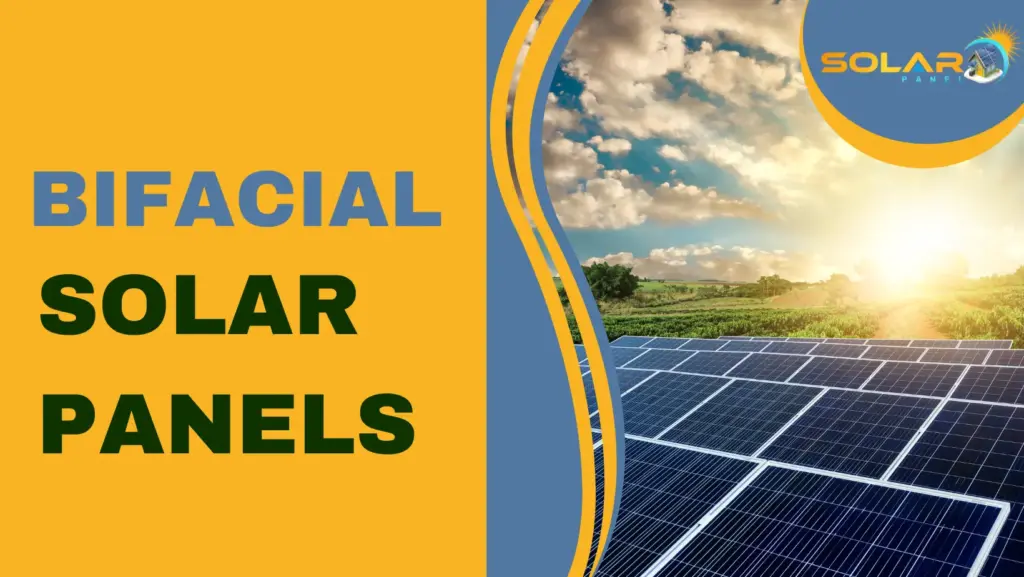
Its price is a little higher as compared to the mono facial. It offers multiple installation methods for all home and commercial users. In this article, I will give you all the details about bifacial panels their price, pros and cons, and comparison.
What is a Bifacial Solar Panel?
Bifacial solar panels generate more electricity as they can produce power from both sides of the module as compared to traditional solar panels. This is a good innovation in the technology of renewable energy and gained much attention from all the market players. Do you wonder how it can produce energy from both sides? Well, this is designed with the PV solar cells on both the front and rear, backside of the panel to produce more energy.
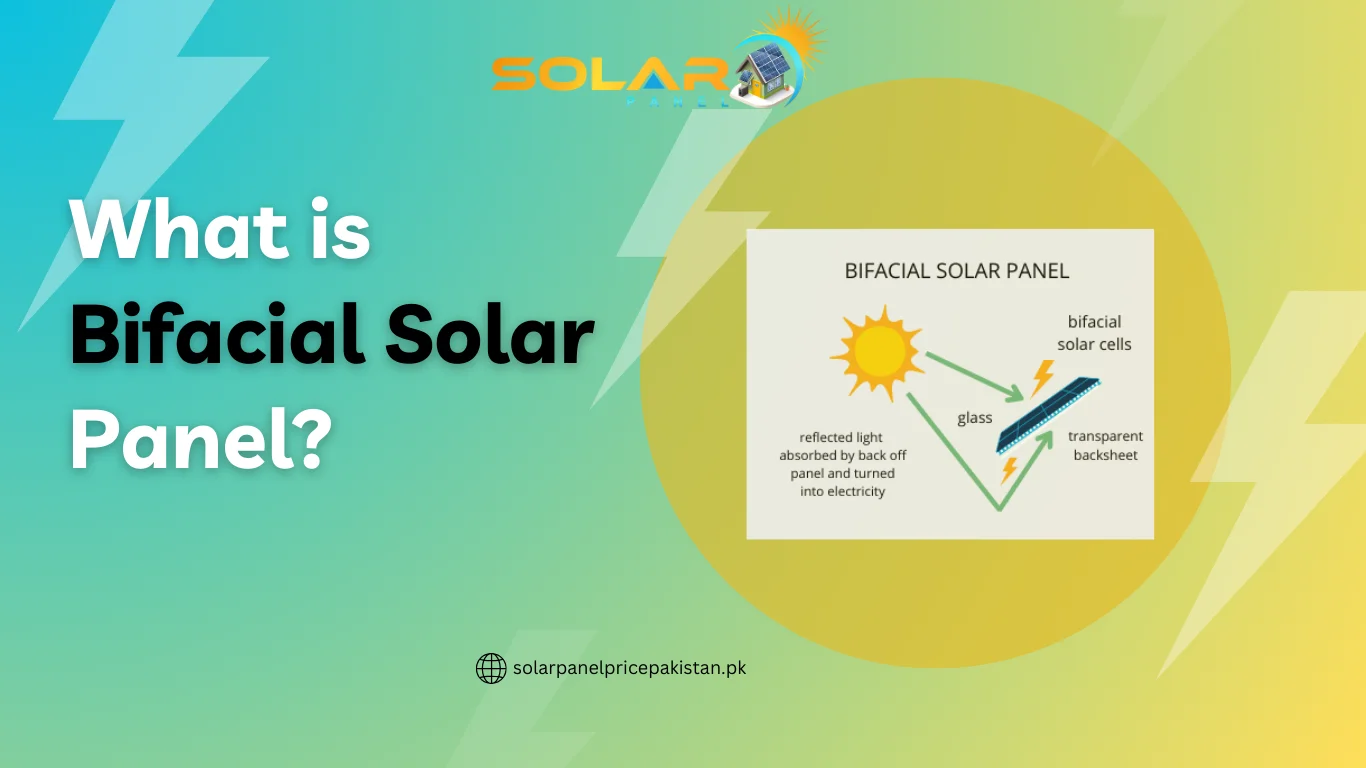
These solar plates can harvest energy from direct, reflected, or diffused solar arrays. It can be installed in multiple formations, structures, and places on the rooftop, on the ground, in vertical panel positions and many others. Technically these are more efficient, more reliable and durable in terms of life span. It’s both sides are UV (Ultraviolet) protected and the potential degradation is decreased.
The overall cost of the system will be lower and more power can be generated with a smaller array of modules and covering less area. When installed on a highly reflective surface these can produce much higher energy just from the rear side of the panel, manufacturers claim upto 30% increase in the generation of electricity just from the rear side electricity generation.
Comparison of Bifacial and Monofacial Solar Panels
The Sole purpose of solar panels is to convert sunlight into direct electricity. These modules can differ in the way how they collect and transform into electrical energy, efficiency, cost, area, and installation options. Traditional modules only harness power from the top side and from direct sunlight whereas bifacial solar panels from the top and bottom as well.
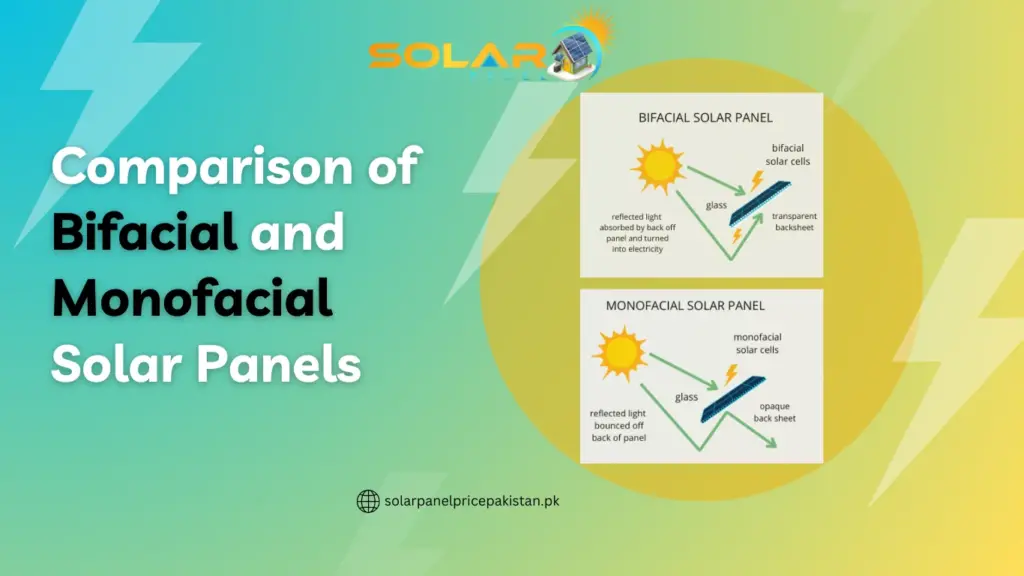
Bifacial solar modules absorb and produce power from the reflected light from the ground or stones with shining surfaces. Which results in increased production electricity production and is most suitable in the areas with shiny surfaces. There are many reflection materials like TPO and white paint available in the market to use under the bifacial panels
A comparison of some major parameters is shown in the below table for a clear understanding of users to decide which solar panels to buy.
| Feature/Parameters | Monofacial Solar Panel | Bifacial Solar Panel |
| Produce Power | Single Side | Two side |
| Efficiency | Upto 21% | 3-10% higher |
| Electricity | As per rating | 30% higher |
| Module Price | Low | Higher |
| System Cost | High | Lower |
| Required Area | High | Lower |
| Strength | Normal | More Durable |
| Potential Degradation | High | Lower |
Advantages and Disadvantages of Bifacial Solar Panels in Pakistan
When considering the switch to bifacial solar panels, it’s crucial to weigh their pros and cons. Here’s a succinct breakdown to help you quickly discern the potential benefits and drawbacks.
Advantages of Bifacial Solar Panels
High efficiency: Being Dual-sided design, bifacial PV solar panels can harness more sunlight so produce higher energy. Many studies and some of the practical applications have recorded as much as 30% greater production. However, initially, most of the applications were resulting around a 3% to 10% increase in energy production. Greater production took place with the usage of reflection sheets.
Potential Overall System Cost Reduction: In some cases, bifacial panels can generate enough extra power to reduce the total number of panels needed in a solar array, potentially offsetting their slightly higher upfront cost.
Optimized Area: These panels generate more electricity per panel, so less require less space for the same amount of energy by using single-side monofacial panels.
Durability: In Bifacial panels both the front and rear sides of the panel are specially made of glass and other UV-resistant materials, which increases the strength, enhancing overall durability.
Versatility: These panels are particularly effective in areas with high reflectivity, such as snowy regions or white rooftops.
Longevity: Bifacial panels, due to their robust manufacturing, might have longer lifespans compared to traditional panels. This is evidenced by most companies offering 30-year warranties of the bifacial panels as compared to the 25 year warranties offered on traditional panels.
Disadvantages of Bifacial Solar Panels
Higher Capital Cost: Bifacial panels are manufactured using advanced materials and design, which leads to increased manufacturing costs. So this when combined with the special mounting structure, can increase the initial cost of the panel so higher investment is required as compared to the traditional monofacial solar panels.
Maintenance: Maintenance needs special attention as solar panel washing is necessary for maximum electricity generation. Two sides washing can be a little more complex so there should be provision for safe maintenance.
Installation: A special mounting structure should be installed to keep focus on the direct or reflected sunlight. Ensure suitable space under the panels for proper reflection of sunlight.
Installation of Bifacial Solar Panels in Pakistan
How to install Bifacial Solar Panels?
Bifacial solar panels in Pakistan are available in different designs some have frames, and others are simple sheets. Double glass makes it more durable and long-lasting that’s why companies offer long warranties for BF Panels. Installation of bifacial requires a special mounting steel structure. It totally depends on the designer and installation expert of the individual solar system expert. But it can be installed in the following easily:
Vertical Installation:
Panels can be installed in the vertical position on the ground as shown below. Do not bend the frame of the panels and use high-quality structure and clamps to make sure the panels are secured from any wind pressure and storms. For electrical wiring use high insulation cables and always use system earthing.
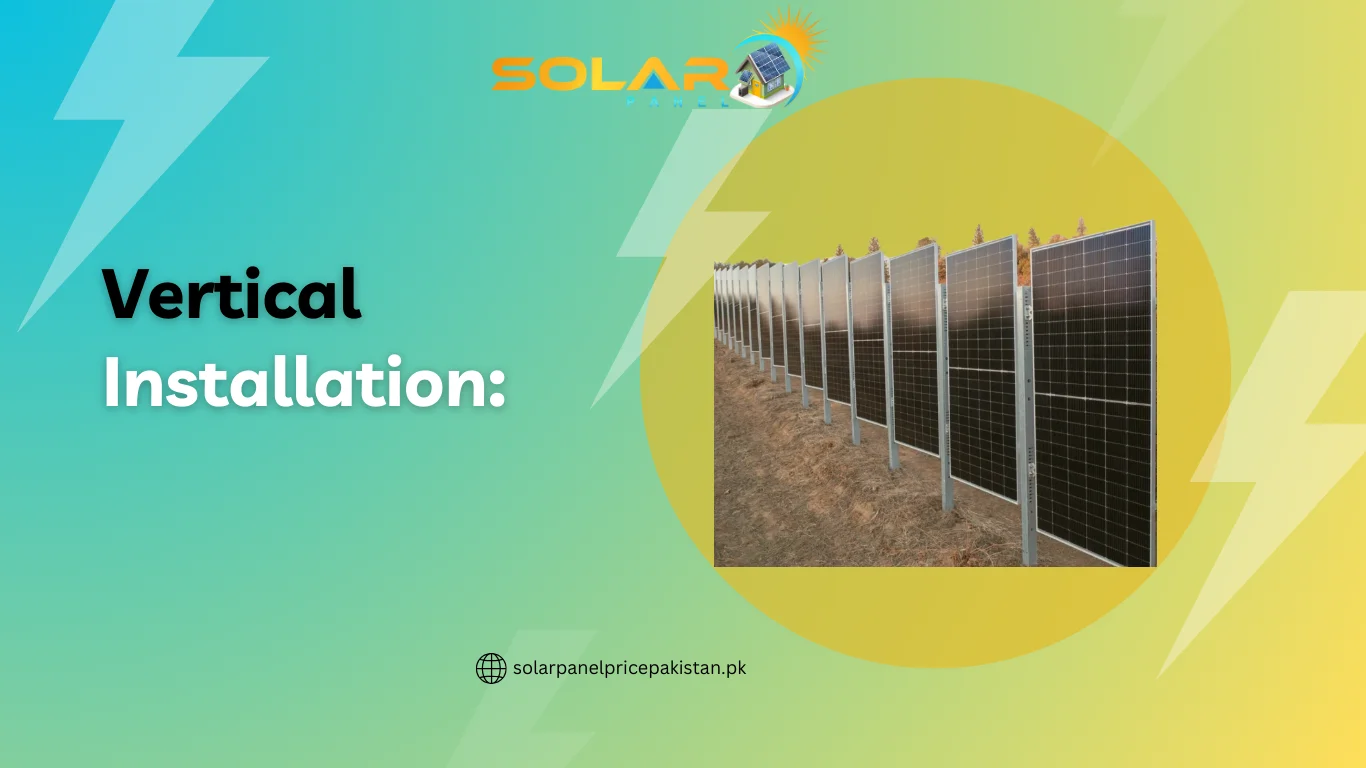
Rooftop Installation:
Install bifacial solar panels on the flat roof or top lifted portion and at a height from the ground of the roof. Proper reflection of light is only possible from the plane and white surface. Use white paint and reflector sheets available in the market to increase the reflection and electricity generation from the installed PV modules. Also, use a high-efficiency MPPT Solar Inverter for maximum output of energy. If want to install it on the pane ground follow the same instructions.
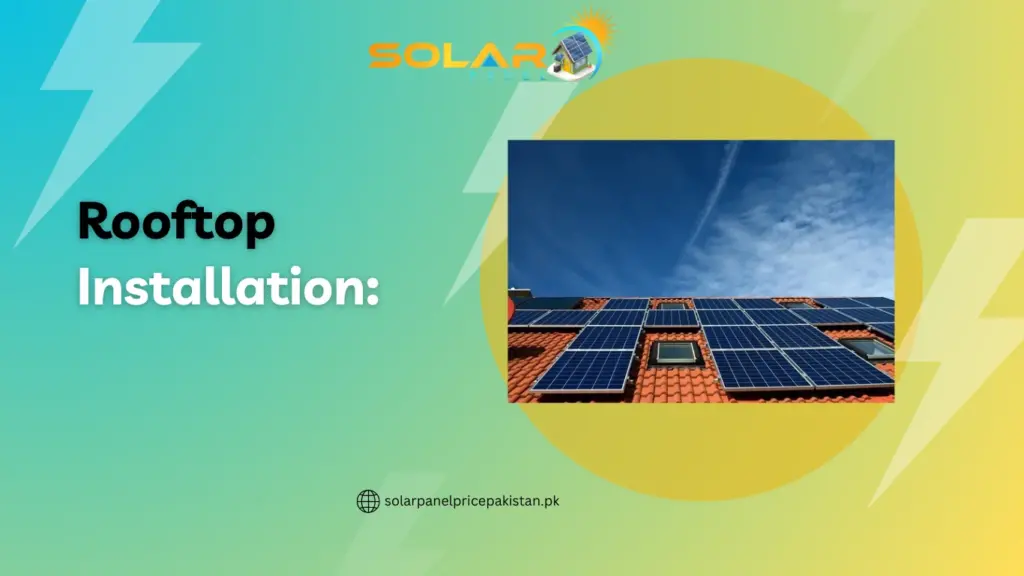
Bifacial Solar Panel Price
The price of the bifacial panels is a little higher than mofacial. Price can also vary from state to state and different cities, you can see the latest price of solar panels in Pakistan for a detailed price list.
Are Bifacial Solar Panels Worth It?
Yes, from many site data, it is clear that bifacial solar panels perform much better in terms of core performance parameters as output energy. The graph of their demand is continuously increasing day by day. These panels can generate extra energy within less than a year which costs a little higher initially so it’s much worth buying bifacial solar modules.
FAQs
Updated on: 15 December 2025
